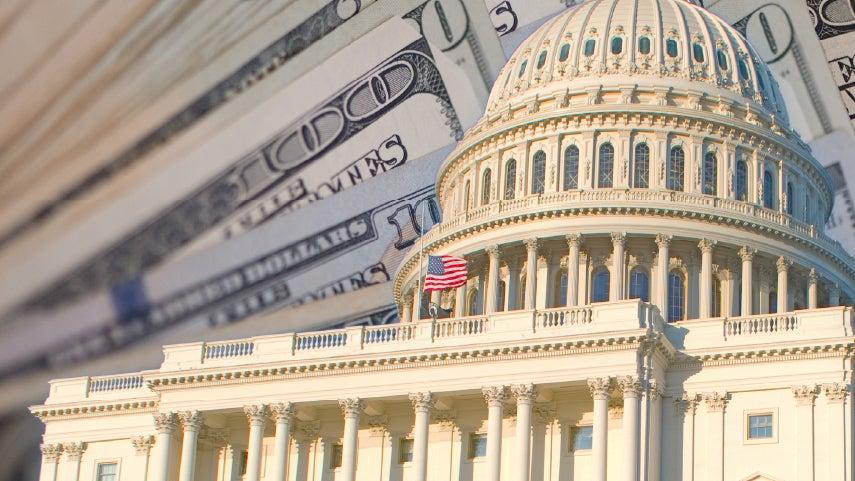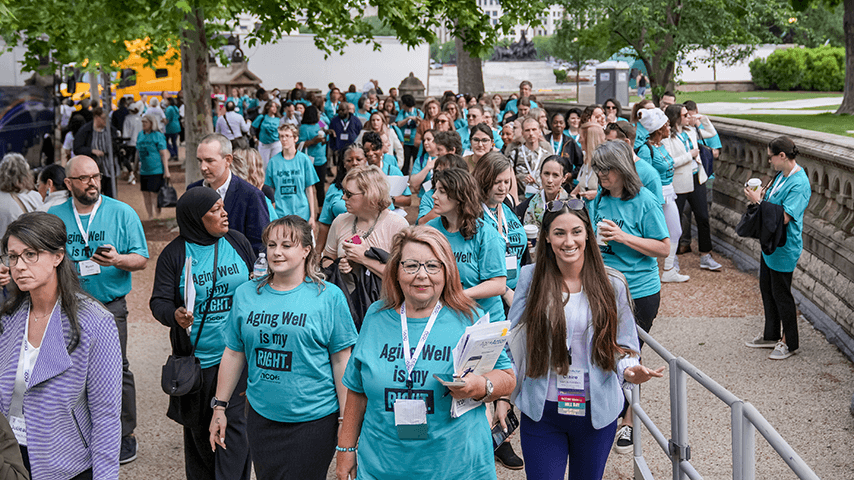
Related Topics
The final fiscal year 2024 appropriations were signed into law by President Biden on March 9. Most programs of concern to older adults and those who serve them were level-funded, with a few exceptions noted below.
The same day, President Biden also released his budget request for fiscal year 2025. It includes a broad array of initiatives outlined below that would improve the lives of older adults.
What was included in FY24 legislation?
Congress allocated $62.5 million to extend funding for Medicare low-income beneficiary outreach and enrollment efforts, initially authorized under the Medicare Improvements for Patients and Providers Act (MIPPA).
This includes resources for SHIPs, area agencies on aging, and aging and disability resouce centers, as well as NCOA’s Center for Benefits Access that provide additional funding to 90 Benefits Enrollment Centers (BEC) across the nation. Funding is extended to Dec. 31, 2024, so we will continue advocacy efforts, ideally making the program permanent with a modest funding increase.
What is NCOA watching in the Biden FY25 budget request?
Below are the proposals in the FY25 budget that NCOA is tracking, many of which we support.
Medicare
- Extend Medicare Part A Trust Fund solvency by an estimated 25 years.
- Include Medicare prescription drug provisions to increase the number of drugs subject to negotiation, make drugs eligible for negotiation more quickly, and require plans to offer a list of high value generic drugs with a maximum copayment of $2 for a 30-day supply.
- Expand access to Medicare Savings Programs (MSPs) by aligning eligibility processes with the Part D Low-Income Subsidy (LIS) to reduce administrative barriers to enrollment.
- Require states to have a one-year renewal period for individuals enrolled in the Qualified Medicare Beneficiary (QMB) MSP, which could lessen the administrative burden on QMB beneficiaries and states.
- Allow retroactive coverage of Part B premiums for certain periods of time for individuals in the QMB program.
- Expand and enhance access to Medicare coverage of nutrition and obesity counseling.
- Establish a demonstration to test Medicare coverage of medically tailored meals for beneficiaries with a diet-impacted disease.
- Expand the current Medicare Diabetes Prevention Program model to be a permanent benefit.
- Apply the Mental Health Parity and Addiction Equity Act to Medicare and eliminate the 190-day lifetime limit on psychiatric hospital services
- Require Medicare to cover up to three behavioral health visits per year without cost-sharing when furnished by participating providers.
- Provide coverage of select, evidence-based support services delivered by community health workers for prevention and care navigation for chronic or behavioral health conditions.
- Require Medicare Advantage plans to spend a minimum percentage of their revenue on supplemental benefits.
Medicaid
- Invest $150 billion over 10 years to improve access to Medicaid HCBS, which would reduce waiting lists and allow older adults and people with disabilities to remain in their homes, as well as helping to address the growing direct care workforce crisis.
- Provide Medicaid-like coverage to individuals in states that have not adopted Medicaid expansion under the ACA with financial incentives to ensure that states maintain existing expansions, which could result in coverage for up to an additional 2 million people.
- Align appeals procedures for Medicare and Medicaid to make it easier for individuals dually enrolled in both programs to appeal a coverage decision.
Aging services
Compared to last year’s request, the administration’s proposals for investing in aging services in FY25 are modest.
Notable increases:
- Older Americans Act (OAA) congregate nutrition: $56.4 million
- OAA home-delivered nutrition: $66.4 million
- OAA Aging Network Support: $10 million, including a $6 million increase for the Direct Care Workforce Demonstration
- Low-Income Home Energy Assistance Program (LIHEAP): $86 million
The budget request also calls for a five-year extension of Medicare low-income beneficiary outreach and enrollment funding under MIPPA.
Other issues that impact older adults
- Establish a national comprehensive paid family and medical leave program, providing up to 12 weeks of leave to allow eligible workers to take time off, including for care of a seriously ill loved one.
- Permanently extend ACA marketplace enhanced premium tax credits, which are scheduled to expire at the end of 2025.
- Permanently extend the Earned Income Tax Credit (EITC) to low-income older workers.
Learn more about proposed investments in aging services at the Departments of Labor, Housing and Urban Development, and Agriculture, and the Corporation for National Service in our annual funding table.
What’s next for the FY25 budget request?
The release of the budget request kicks off the annual appropriations process, and appropriators are currently soliciting input on funding priorities. NCOA is working with our Congressional champions to advocate for increases for falls prevention, the Medicare State Health Insurance Assistance Program (SHIP) and the Senior Community Service Employment Program (SCSEP).
The debate will continue throughout the summer. While the deadline to pass the 12 annual appropriations bills is Sept. 30, the prevailing expectation is that the process will not be finalized by the start of FY25 and Congress will have to pass a continuing resolution (CR) to keep the government open. That sets up a lot of work to occur in the “lame duck” session after the November election. We’ll be focused not only on finalizing funding, but also extending MIPPA and making it permanent.
Your voice is important now and throughout the year. Visit our Action Center for ways to educate your members of Congress on a variety of issues important to older adults and their caregivers. Stay informed with our online resources. Expect a push for collaborative efforts during the Virtual Advocacy Day to complement NCOA’s Hill Day during the 2024 Age+Action Conference on May 8 and throughout the month of August while members of Congress are back home.
Throughout these federal budget discussions, NCOA will continue to advocate for our key policy issues toward our vision of a just and caring society in which each of us, as we age, lives with dignity, purpose, and security.




